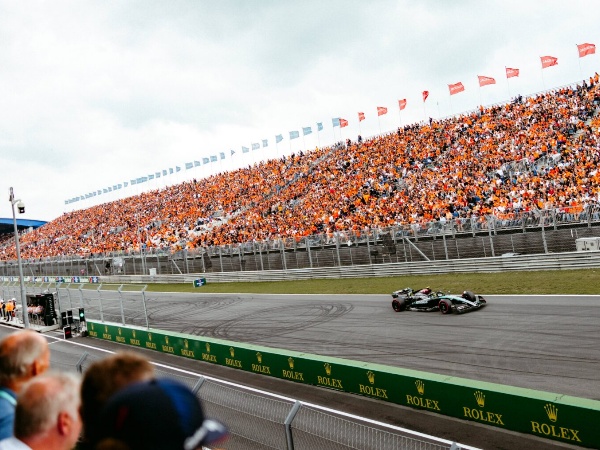views : 727
4 Min Read
Zandvoort Unleashed: Home of the Dutch Grand Prix
Zandvoort, like Silverstone, opened its gates in 1948 amid a post-war motorsport boom that surged through Europe. The circuit was born out of a passion for racing and a desire to revive sporting spirit after World War II. Nestled in the coastal dunes of the Zandvoort resort town, the original track combined permanent sections with public roads, creating a fast, flowing layout unique to its natural surroundings. The Dutch Automobile Racing Club led the initiative to build the circuit, aiming to make it a prominent motorsport venue. To perfect the design, they enlisted the expertise of Sammy Davis, the 1927 Le Mans winner, who offered consultation on the original 4.2km layout. His input helped shape a track that would go on to challenge drivers with its sweeping corners and dune-laced scenery. Zandvoort quickly became a beloved fixture in European racing history and remains iconic in Formula 1 today.
All you need to know about the F1 circuit of the Dutch Grand Prix
Formula 1 first touched down in the Dutch dunes at Zandvoort in 1952, where Ferrari’s Alberto Ascari delivered a masterclass, leading a dominant 1-2-3 finish for the Scuderia. The coastal circuit quickly earned its place in the F1 calendar, known for its fast, flowing corners and dramatic setting through the sand dunes. Over the next few decades, Zandvoort hosted several memorable Grands Prix, though its presence in the championship was sporadic. By 1985, F1 had said farewell to the historic track, and for 35 years, Dutch fans were left without a home race. That changed in 2019, when Formula 1 officially announced its long-awaited return to Zandvoort for the 2020 season. The revival came amid a surge of excitement around Dutch driver Max Verstappen, reigniting national passion for the sport. Zandvoort’s return brought back not just racing, but a legacy deeply embedded in Formula 1’s European heritage.
When asked to describe the Zandvoort circuit, modern Formula 1 drivers used words like “really quick,” “pretty insane,” “crazy,” and “old-school” — and with good reason. Many of them experienced the track during their junior careers, and its distinctive layout left a lasting impression. To that list, you could also add “undulating,” as Zandvoort is known for its sweeping elevation changes and fast, flowing corners that snake through the coastal sand dunes. The result is a lap that feels more like a rollercoaster ride than a traditional racetrack, demanding precision, bravery, and total focus from the drivers.
As Formula 1 prepared for its long-awaited return to Zandvoort in 2020, the circuit underwent several modern upgrades to meet F1 standards while preserving its original character. Among the key changes was the steepening of the iconic Tarzan corner, which was re-profiled to feature an 18-degree banking — steeper even than the famed Indianapolis Motor Speedway. Despite these enhancements, Zandvoort retained its core identity: a tight, technical, and thrilling circuit that puts driver skill front and center. With its old-school charm and modern flair, the Dutch Grand Prix promised to be one of the most exciting and challenging events on the calendar.
Zandvoort offers a thrilling mix of elements that make it a must-visit for any Formula 1 fan. The historic Dutch circuit isn’t just known for its challenging layout—it’s also steeped in motorsport lore. It famously appeared in John Frankenheimer’s iconic film Grand Prix and has hosted some unforgettable F1 moments over the years, including Gilles Villeneuve’s legendary three-wheeled drive back to the pits. With such a rich legacy, Zandvoort has long held a special place in the sport’s history.
What makes the modern experience even more exciting is the electrifying atmosphere brought by the Dutch fans, especially with national hero Max Verstappen on the grid. Expect the stands to be awash in orange and the energy to be sky-high. The location is another major draw—set along the beach and just a short 30-minute train ride from the heart of Amsterdam, it’s perfect for combining world-class racing with a coastal getaway.
When it comes to spectating, there are a few prime spots you won’t want to miss. The first turn, Tarzan, always promises drama. But also keep an eye on the newly reworked corners like Arie Luyendykbocht and Hugenholtzbocht. The latter has been widened and redesigned with banking to create a parabolic effect, allowing cars to run side by side at high speed. These changes were part of the upgrades made ahead of F1’s 2020 return, and they ensure that Zandvoort remains a thrilling, technical circuit where fans are always close to the action.
